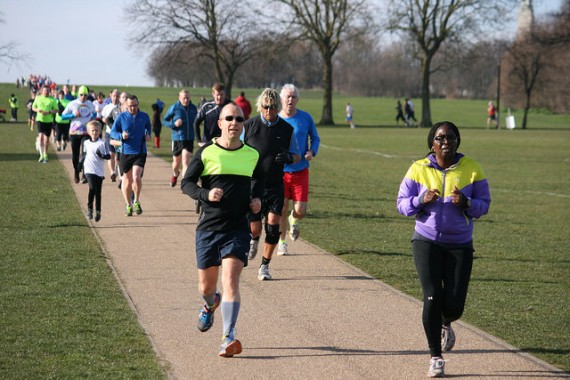Grassroots participation in sport is back to the levels recorded immediately after London 2012 according to funding body Sport England.
According to Sport England’s latest Active People Survey, nearly 16 million people over the age of 16 played at least 30 minutes of sport per week in the 12 months to March 31st.
That is a rise of 340,000 on the previous year and 1.75m more than when London won the right to host the Games in 2005.
Three quarters of the most recent improvement comes from women getting more active, with running continuing to do well and team sports such as cricket, netball and rugby union also returning to growth.
But the number of disabled people playing regular sport is slightly down, and there remains a significant gap between the levels of participation in sport by the middle classes and those from more disadvantaged backgrounds.
“These numbers are really positive and we’re particularly pleased about the figures for women,” Sport England chief executive Jennie Price said.
“That is a testament to the success of programmes like ‘This Girl Can’ and it proves that it is possible to do this at the population-wide level.
“The running boom shows no sign of slowing down, too, which is great, but we’re really pleased to see some of the team sports growing again.
“Rugby union, for example, has worked really hard at delivering a legacy to the Rugby World Cup – they listened to what the clubs wanted and most of its growth has come from those aged over 26.”
Football’s figures have been broadly flat for the last few surveys but it has lost 150,000 regular players since 2005.
Price acknowledged the good work being done by the FA but said it could still do more to “engage with the short-sided game”.
“We know that its heartland is the 11-a-side game – that’s what its affiliated clubs are most interested in and that is fine.
“But if the FA wants to fuel real growth they need to follow the market and that means short-sided football, particularly outdoors. That is what young people want.”
The FA, however, believes it has been listening to the market, as demonstrated by successful initiatives such as the FA People’s Cup and FA Girl’s Football Week.
“We are encouraged by the figures which demonstrate an ongoing growth in outdoor small-sided football participation – driven by a rise among the traditionally problematic post-school 16-25 age group,” said Pete Ackerley, the FA’s head of participation and development.
Ackerley pointed out that a harsh winter had affected the amount of 11-a-side football played in this period and said the FA had a four-year plan, costing £260m, to “establish opportunities for flexible forms of the game, delivered in a manner which best fits a modern lifestyle”.
The first fruits of this investment will be seen in Sheffield later this year when two “pilot hubs” with artificial grass pitches are opened.
Swimming remains England’s most popular activity, with athletics second, cycling third and football fourth.
Sport England, which distributes more than £250m of lottery and public money annually, is changing its strategy next year to focus more on boosting general health and fitness, as opposed to concentrating solely on organised sport.
Price said this will give it more “licence to do the tougher things” such as address why poorer groups do less exercise and what can be done to get older people with disabilities to be more active.
“We need to look at why sports such as basketball aren’t doing better – that’s worrying – and be more sophisticated in what we offer to those with more than one disability,” said Price.
“Because we know there is no lack of appetite out there and the equation is pretty simple: more activity equals greater fitness equals better quality of life.”








